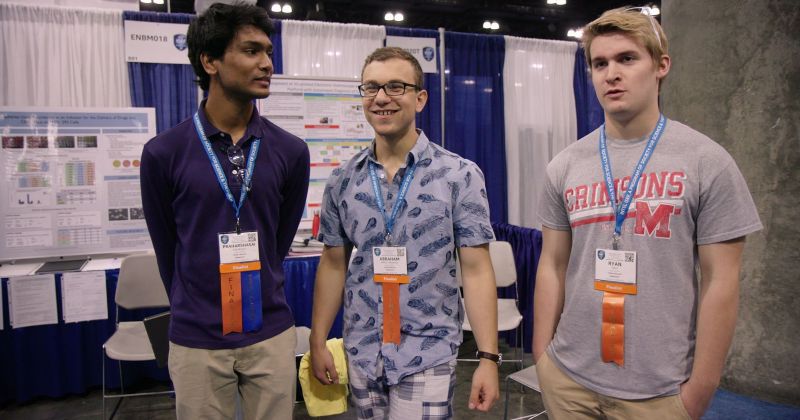About three minutes into “Science Fair,” filmmakers Cristina Costantini and Darren Foster summarize their project. An inexpressive narrator delivers the following: “More than seven million students worldwide participate in science competitions. 1,700 will qualify for the International Science and Engineering Fair. But only one will win. This documentary follows nine students from around the world on their quest to be named best in fair.”
The filmmakers accomplish their goal. They acquaint us with competitors from Kentucky, West Virginia, New York, South Dakota, Brazil and Germany, explain their research, and trace their journey to the International Science and Engineering Fair, abbreviated as ISEF. The film ends as they reveal who won “best in fair.” The students they follow are working on ambitious projects worthy of attention, but unfortunately, Costantini and Foster’s project is neither ambitious nor important. Throughout the documentary, the students present their complex concepts with real world impacts — one group works on a cure for the Zika virus, while another analyzes risk-taking behavior in teens. Yet, because Costantini and Foster work from such an empty premise, “Science Fair” makes little impact.
The first half of the documentary is devoted to introducing the nine contestants. They discuss their hometowns, their interests in science, their projects and their hopes for the future. Costantini and Foster try to have the students describe themselves in their own words. As each student speaks, a little of his or her personality comes through. Robbie created a computer that could rap like Kanye West, not only because machine-learning fascinates him but also because he enjoys listening to Kanye’s music. Kashfia, a Muslim and an introvert, often feels out of place in her conservative hometown of Brookings, South Dakota, but participating in the science fair bolsters her confidence.
Still, because each student presents the same basic information in practically the same order, this first section often feels repetitive. After a while, I had the feeling that I was playing a “Science Fair”-themed version of Mad Libs — [insert name here] comes from [insert place] and is working on a project on [insert topic]. Costantini and Foster cling so tightly to this formula that they do not explore some intriguing ideas. Instead of focusing so much on Robbie’s West Virginia milieu, might it have been more fruitful to consider how his interest in machine-learning changes his perspective of art? Instead of describing how Kashfia’s school prioritizes sports over science, might it have been more compelling to detail how competing in the science fair has shaped her identity?
Of course, Costantini and Foster must focus on ISEF itself since it is the last step in the students’ “quest to be named ‘best in fair.’” Still, there’s not much that really occurs at this competition in Los Angeles. The students simply arrive, their projects are evaluated and the judges announce the winners. Costantini and Foster allot 45 minutes to covering the competition, however, so they are forced to make a plethora of petty predicaments prominent. One student feels under the weather, so they build suspense as to whether she will be fit enough to present. They spend a few minutes describing the possibility of being disqualified and make every decision of the rules committee as remarkable as a royal edict. They treat the ISEF dance party as if it is a society ball out of Jane Austen. Are we supposed to wonder whether the students will go home with both prizes and paramours?
Then, just before the prize recipients are revealed, Costantini and Foster present a puzzling digression. Previous winners of the science fair, teachers and students themselves emphasize that the science fair is not all about awards. Instead, all the students are winners because they have all had the extraordinary experience of participating in ISEF. This is probably true, but since the entire documentary has been about these students’ “quest to be named best in fair,” this section makes little sense. Why did Costantini and Foster spend 45 minutes focusing on the minutiae of the competition if the competition itself is not really important?
By the end of the film, the winner has been revealed. Thus, Costantini and Foster have achieved all that they set out to do at the beginning of the film. They have followed nine students right to the end of ISEF. Yet, Costantini and Foster’s goal is so facile that “Science Fair” is underwhelming. The paparazzi follow celebrities with cameras all the time, and every episode of “Chopped” chronicles someone’s quest to be the best. How is Costantini and Foster’s work any different? Paradoxically, while the research discussed in “Science Fair” is ingenious, the film itself is uninspired.
Contact Amir Abou-Jaoude at amir2 ‘at’ stanford.edu.
